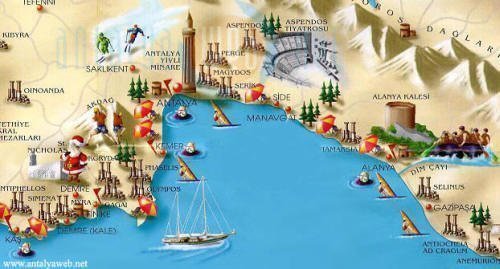Antalya, located on the Mediterranean coast in southwest Turkey, is located on a coastal plain surrounded by mountains, on the coastal cliffs of the Falez type. The coastal plain, which narrows gradually to the west, has very fertile soils in the east. Development and investment planning that began in the 1960s transformed the city into an international station in 1970. Tourism, as the locomotive sector of Antalya, has transformed this beautiful city into the tourism capital of the country.
Antalya’s protohistoric history dates back to ancient times. However, it is not known when people started to live in the settled order in this region. Pergamon King Attalos II BC. It takes place in the records that he took around 150 cities and named Attalia after his own name. Attalos II chooses this port as a naval base for his ships.
In the excavations carried out since 2008 in the Doğu Garajı district in the present center of Antalya, BC. Graves dating back to the 3rd century BC have been found. The burial structures found in this area, which is the necropolis (cemetery area) of the city within the castle walls, make us think that the city was founded earlier than expected. Antalya BC In 133 it became part of the Roman Republic. King of Pergamon III. During the Attalos period, the city grew and prospered.
2. After the century, Christianity began to spread in the region. Antalya was visited by Paulus of Tarsus, as stated in Christian sources. Antalya lived as a major city of the Byzantine Empire until the arrival of the Turks.
The city and its surroundings came under Seljuk rule in the 13th century. Antalya was the capital of the Teke Turkish Principality (1321-1423) until its conquest by the Ottomans. The Arab traveler Ibn Battuta, who came to the city between 1335 and 1340, records the following in his notes:

